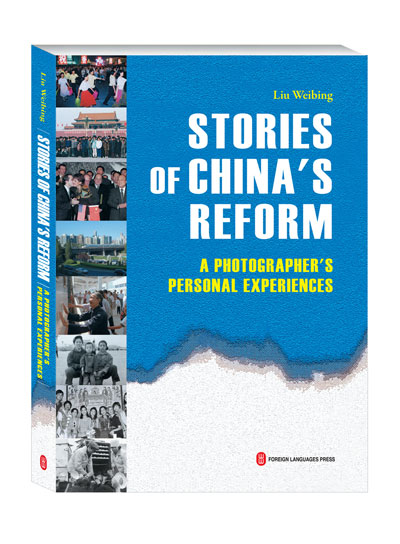 |
| (Photo provided to People's Daily Online) |
A good book pulls you in. Fictional or non-fictional, it conjures up another world and draws you into it. You smile and you grieve; you marvel and you sigh. Only when you finish the last line on the last page can you come out of it, yet some of the scenes stick with you.
Mr. Liu Weibing’s Stories of China’s Reform -- A Photographer's Personal Experiences, recently published by Foreign Language Press, stands out as such a compelling book. Those down-to-earth narratives, like pieces of a splendid mosaic, add up to an all-embracing, true-to-life account of the earth-shaking changes that have reshaped China and the world at large during the past 30-odd years.
Poring through the book is like strolling down a picture gallery. As a seasoned senior photographer with Xinhua News Agency, the state news agency of China and a leading news organization in the world, Mr. Liu illustrates his stories with abundant riveting photos -- from cabbages to fast food restaurants, from bus ads to beauty contests, and from the SARS outbreak to the Wenchuan earthquake. Embodying his outstanding professional acumen, these pictures freeze the most representative moments, reinforcing the truth contained in the time-honored aphorism that a picture is worth a thousand words.
No less striking is the language Mr. Liu employs to carry his stories. Studded with felicitous details and vivid descriptions, his narration not only tells but also draws. “From then on, I would rush to the chicken coop the moment I heard the clucking of a hen. My delight would be beyond description once I had an egg in hand, and I would lose no time to crack one end of it and then drink the white and yolk whole and raw.” What an animated portrayal of a naughty and greedy boy!
Such too-real-to-be-fictional vividness that characterizes the whole book is no surprise. The book is a first-person narrative of Mr. Liu’s rich experiences and astute observation. He was there at the scenes -- the Xishimen grain shop, the Shanghai stock exchange, the National Day parades, the Yangtze River floods, and numerous others that bear the footprint of history. A man of passion, he was there feeling the varying tempos of life; a man of professionalism, he was there recording the changing flow of history.
Mr. Liu is a keen observer. Decades of learning and practice have sharpened his eyes and honed his mind. As fully demonstrated by the book, he is able to discern the subtle and capture the typical. He is also a competent recorder. What is particularly noteworthy is that he documents what happens not only with lenses but also with pens. The photographer has a habit of keeping diaries and writing blogs. Piled up, his notebooks will be more than one meter high. No wonder he has already authored three books in addition to a photo album.
It is also worth mentioning that, thanks to his unique role as a Xinhua senior photographer, he has been blessed with a front seat to witness countless great moments of history. His latest publication contains a trove of previously unpublished details about such historic events as the Chinese-U.S. negotiations about China’s entry into the World Trade Organization in 1999 and Kuomintang leader Lien Chan’s first visit to the Chinese mainland in 2005. Many of them are small yet revealing episodes that help better understand the related big occasions.
The technique of using small details to convey the big picture is applied throughout the book. The collection of stories covers a cross-section of daily activities and social phenomena, such as pollution, high-speed railway, weibo and migrant workers, and a large number of the subjects are ordinary stuff at first sight, like kettles, hutongs, stocks and shopping streets. But skillfully turning those seemingly run-of-the-mill materials into variegated pieces, Mr. Liu has created an elaborate mosaic about the socioeconomic development of his country and the improving livelihood of his countrymen in the past 35 years.
His style of writing is comfortingly simple. Reading the book feels like having an interesting chat with a storyteller. The content is factual, fresh and fascinating; he does not need to spice it up. The only additive is the occasional sparks of his insight and wisdom. As he writes in the book, “People hurrying to work seldom take notice of things at a street corner. But things at a street corner may be worth seeing, like the stone sign that tells you the beginning of cinematography in China. Inspired by the sign, one may proceed to think of the changes that have taken place in it over the past century, especially over the most recent decades.”
Stories of China’s Reform is such a stone sign: It leads to a multi-tier review of the changes that have taken place in China over the most recent decades. It is a history book rid of dry accounts and boring numbers but flush with detailed stories and enthralling pictures. It is a unique gramophone record of history: The voices of ordinary citizens and those of national leaders, instead of degenerating into a chaotic cacophony, complement each other and converge into a symphony of the times.
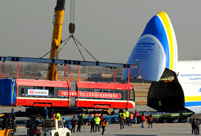 Heavy cargo flights taking off
Heavy cargo flights taking off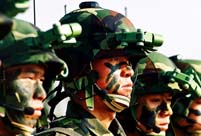 In pictures: PLA's digital equipment
In pictures: PLA's digital equipment 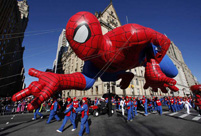 Americans mark Thanksgiving Day with parades
Americans mark Thanksgiving Day with parades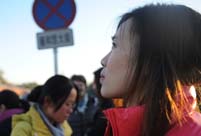 Love searching stories in cities
Love searching stories in cities 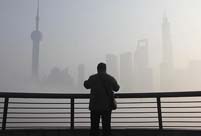 Shanghai shrouded in heavy fog
Shanghai shrouded in heavy fog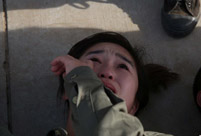 Office ladies receive ‘devil’ training in mud
Office ladies receive ‘devil’ training in mud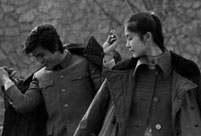 Changes in Chinese dancing culture
Changes in Chinese dancing culture  Highlight of Mr Bodybuilding and Miss Bikini Contest
Highlight of Mr Bodybuilding and Miss Bikini Contest  Picturesque scenery of Huanglong, NW China
Picturesque scenery of Huanglong, NW China Life in an ancient academy
Life in an ancient academy Best photos of the week
Best photos of the week Spring City Kunming witnesses snowfall
Spring City Kunming witnesses snowfall White-collars, black eyes
White-collars, black eyes China's moon rover, lander photograph each other
China's moon rover, lander photograph each other Youths in Night club: photo story
Youths in Night club: photo storyDay|Week|Month